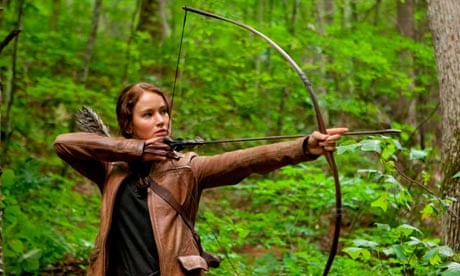I inherited from my Dad a love of good old-fashioned swashbuckling adventure stories. Little Women and Wuthering Heights sat cheek by jowl on my teenage bookshelf with King Solomon's Mines, A Journey to the Centre of the Earth and Treasure Island. Lost worlds, battles between good and evil, extreme landscape, mystery, swords and spears and guns, these were epics, not domestic stories. Allan Quatermain and Axel and Jack Hawkins got to do things. As I got older, I turned to Ice Station Zebra and Wilbur Smith's The Seventh Scroll, as well as Tolkein's Middle Earth. Even then, though, I realised that girls were thin on the ground. The dedication at the beginning of King Solomon's Mines is to "all the big and little boys who read it." But what about the girls? And where were the female adventure heroes?
There are certain characteristics common to the best adventure stories, not least of all a "hero" – the protagonist who carries the story (and the readers' affections). There'll be danger and jeopardy, an unequivocal sense of right and wrong, a compelling sense of place. For me, the word "heroine" always implied a supporting or secondary character, not the lead. Someone waiting to be rescued rather than the person doing the rescuing. But once we define the hero, simply, as the purposeful and dynamic protagonist who carries the story – someone who exhibits certain patterns of behaviour or characteristics – then there's no reason the hero can't be a woman.
This week I joined the former children's laureate Julia Donaldson, the Australian author John Marsden and the debut novelist Samantha Shannon to discuss this issue at the Edinburgh international book festival. To ask why – given the relatively equal split between female and male protagonists in literature for children and teenagers – active and adventurous girls seemed too often to vanish when they grew up. To ask where all the brave girls have gone.
There are plenty of female protagonists in classic children's literature, from Mary Lennox in The Secret Garden to Laura in Little House on the Prairie to Jo March in Little Women. And in contemporary children's fiction it's the same: think of Philip Pullman's Lyra in His Dark Materials or Katniss Everdeen in The Hunger Games or Paige Mahoney in Samantha Shannon's The Bone Season. Are they "heroes"? I'd say they are. They are independent and have a clear moral compass, they are physically courageous and they are at the heart of their own stories.
In children's literature – classic and contemporary – both girls and boys are active participants, whereas in much adult fiction romance appears to be the purpose of the heroine's journey. When talking about her 1918 novel My Ántonia, Willa Cather said: "There is no love affair, no courting, no marriage, no broken heart …. I knew I'd ruin my material if I put it in the usual fictional pattern."
An Allan Quatermain can find and lose love, but it is not the purpose of his story. Too often, when girls in fiction come of age and start to speak for themselves they find themselves walking a well-trodden path to marriage instead of saving the day. Look hard enough and you can find some female heroes in the world of adult literature, like Manda Scott's Boudicca series. They're even relatively common in crime fiction, though like many of their male "lone wolf" counterparts, independence of attitude comes at a high personal cost – think of Kathy Reichs' Temperance Brennan or Sara Paretsky's Private Investigator, VI Warshawski.
When I began to write, I looked to the sorts of novels I'd loved when I was growing up for inspiration: the dominating landscapes of Willa Cather and Emily Brontë, the quests of Rider Haggard and Jules Verne and Walter Scott. Inspired by the real and bloody history of the Languedoc, I began a trilogy of time-slip novels – Labyrinth, Sepulchre and Citadel – set in 13th, 19th and 20th century Carcassonne. It was natural, too – as a woman and someone interested in forgotten women's histories – that my heroes should be female. And I took Cather's advice to avoid "the usual fiction pattern" to heart. Sandrine, the hero of Citadel, is the leader of an all-female Resistance unit in Carcassonne under German Occupation during the second world war. She finds and keeps love – and is loved in return – but this is not what drives her story.
By the time our Edinburgh hour was up, it seemed clear that adult writers could learn a great deal from children's writers. Every author should, of course, be free to write the characters she or he wants to, but literature needs fictional voices of all sorts – strong girls and gentle boys as well as gentle girls and strong boys. After all, what makes a hero – male or female – is a sense of purpose beyond the everyday, courage and determination, independence of spirit. Boys, whether big or little, have no monopoly on these.

Comments (…)
Sign in or create your Guardian account to join the discussion